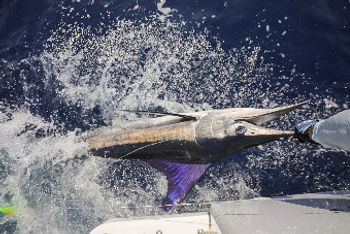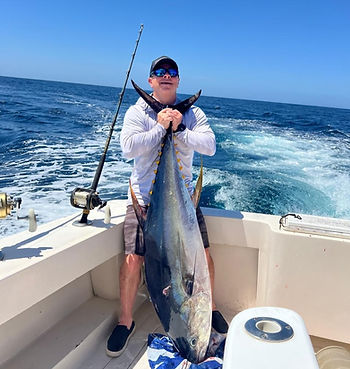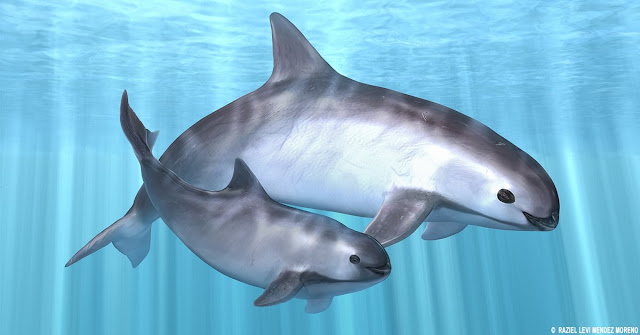Cabo San Lucas Sportfishing — What gamefish you can catch (and when to target each one)
Cabo San Lucas is a fishing paradise due to a mixing zone that concentrates bait and creates fireworks for anglers. You can catch a huge variety of sportfish here: billfish (marlin, sailfish, swordfish), dorado (mahi-mahi), tuna, wahoo, roosterfish, yellowtail and a long list of inshore and bottom species. Below are the main gamefish you’ll target on Cabo sportfishing charters, and the months that are generally best for each species. Seasons do vary year-to-year with currents, bait and water temperature, so think of the months below as the typical “sweet spot” rather than a guarantee.
Marlin (Blue, Black, Striped)

Best months: June–December for Blue/Black marlin (peak in summer → early fall); year round is generally productive for Striped Marlin. Marlin are the marquee big-game fish targets in Cabo — large bait schools and warm ocean currents bring them close to the
famous Cabo canyons and sea mounts. Expect long-range or full-day trips when chasing blues and blacks, and use teasers, live baits and spread-bait trolling for the best chances. Striped marlin can often be found and caught a very short distance from shore but are also caught further offshore. Blue marlin can reach 14 feet in length and up to 2000 pounds, with black marlin able to reach up to 15 feet in length and just under 2000 pounds in weight. Striped marlin are the smaller of the three marlin species, typically growing to a maximum of 13 feet and weighing a maximum of around 500 pounds.
Dorado / Mahi-Mahi

Best months: Typically late spring through early fall (peaking July–September), though dorado can appear year-round when floating debris and warm water concentrate bait. Dorado explode on floating debris and debris lines created after storms. Summer and early fall are the most consistent times for big schools. Dorado are known for their bright colors, acrobatic leaps and also hold the distinction of being one of the fastest growing fish in the ocean, with some gaining up to 40 pounds in weight in a single year. At maximum size, dorado can reach over 70 pounds.
Yellowfin Tuna

Best months: September–December (with strong bites often in October), and they can appear earlier or persist later depending on bait and currents. Yellowfin often travel in fast, hard-fighting schools along productive current breaks and thermal lines. Cabo’s tuna bite
can be spectacular but can also be patchy — when they show up, they show up in numbers. Size can range anywhere from 10 pounds all the way up to several hundred pounds and known for their ability to put anglers through a lengthy and exhausting fight.
Wahoo

Best months: April–February (though not uncommon for a long season starting in midsummer and continuing into the winter months). Wahoo like clean, warm water and feed aggressively on trolled skirted lures and skirted baits. These fish are often highly sought after by casual and experienced anglers for their elusive nature and speed of up to 48 miles per hour. Wahoo bites can be short and furious — be ready.
Roosterfish (inshore superstar)

Best months: May–September, with June–August usually prime — for this inshore species and they can be found throughout much of the year. These are classic beach and rocky-point fish — sight fishing for crashing roosters on surf lines is common. Live mullet, ballyhoo, caballito (needlefish) or top water plugs fished near rocky structure and sandy beaches are typical. Rooster availability is highly local and can vary by year. A fierce fighting fish for their size, which can be upwards of 100 pounds and recognizable by their distinct "comb" like dorsal fin.
Sailfish
Best months: Spring through early summer are common windows for sailfish in the region (timing can vary year to year). Sailfish are more seasonal and sometimes come through with warm-water bait pushes; trolled live baits and teasers are standard methods. Known for their large dorsal fins that are shaped like a sail, they are considered the fastest fish in the sea with the ability to reach nearly 70 miles per hour.

Inshore and bottom species (Snapper, Grouper, Amberjack, Sierra/Spanish Mackerel, Jack Crevalle, Triggerfish)
Best months: Year-round for many species, with local peaks:
Snapper & Grouper: often best in the cooler months (late fall → spring) for bottom trips near reefs and pinnacles.
Jacks: late spring → summer on structure and deeper reefs.
Sierra (Spanish mackerel) and Jack Crevalle: often abundant in warmer months and when bait is running near shore.
Practical tips for planning a Cabo fishing trip
Pick your target species, then pick the month or general time of year. If trying for blue marlin or the elusive black marlin are a goal, plan a summer→fall charter (or just about ant month for striped marlin). If roosterfish or inshore action is your priority, aim for late spring–summer.
Be flexible: currents, bait and seasonal anomalies (e.g., El Niño/La Niña) shift when fish show up.
Choose trip type by target: half-day inshore trips for roosterfish and yellowtail for example; full-day or bluewater trips for dorado/tuna/wahoo; long runs to canyons for large marlin. Or, consider a half day inshore and full day offshore fishing combo.
Check out the latest Cabo fishing report here for the best real-time picture.
Final note
Cabo San Lucas sportfishing is one of the top draws and experiences for visitors in one of the world’s most dynamic and productive sportfishing destinations — but remember that “when fishing is best” can shift week to week, seasonally and from year to year. Visit us to learn more about planning a trip or to book your Cabo fishing charter.
Jason Bailey
Managing Partner-Top Anglers Sportfishing Charters Cabo


Comments